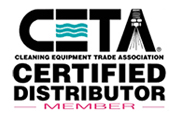Seattle’s frequent rains are beautiful and make the area lush and verdant. However, when you work outdoors, you may get tired of being cold and wet, no matter how pretty the scenery is.
You can’t stop the rain and mist. You can, however, invest in rain gear, including waterproof jackets, bibs, and pants. These clothing items will keep you warm and dry even when the weather is disagreeable.
However, not all waterproof clothing is alike. Read on to learn how waterproof clothing works, what to look for when you buy it, and how to take care of your waterproof rain gear.
How Does Waterproofing Work?
Waterproof fabric has two jobs: the fabric has to act as a barrier to rainwater, but it also has to breathe and let sweat evaporate. If the fabric doesn’t let any water pass through from the inside, the person wearing the clothing will get very wet from their own sweat, which is very uncomfortable.
Waterproof fabrics, including popular brands like Gore-Tex, can do both. In the case of the product Ben’s distributes, Helly Hansen, it is called Helly Tech. Generally, they work because the fabric is laminated with a substance that has microscopic holes, or pores. These pores are only about 10 microns wide-for comparison’s sake, a period at the end of a sentence measures approximately 500 microns.
These holes are too small for drops of water to get through. Water has high cohesion, or, in other words, water molecules like to stick together. This is why rain forms droplets-the water binds to itself. Because the pores in the laminate are so small, the water droplets will roll off the fabric instead of entering the holes.
However, when water has evaporated into vapor, it behaves differently than liquid water. These tiny holes are big enough for molecules of water vapor to pass through. This means that when you exercise, sweat, and get very warm, your sweat will evaporate and exit your clothing, leaving you dry.
There are other coatings that can be used to make a fabric waterproof. However, this method of using a laminate with tiny pores is the most effective at keeping rainwater out while letting the fabric breathe.
What Should I Look For When Buying Rain Gear?
Labels matter when you’re shopping for something to keep the rain out. Watch for these terms:
- Water-resistant. If a piece of rain gear is marked as water-resistant, then it isn’t truly waterproof. Most likely, the outside of the clothing has been treated with a coating to make water bead up and roll off, which is effective if you’ll only be outside for short amounts of time in light rain. If you’re going to be outdoors in heavy rain for long hours, find something else.
- Waterproof/breathable. This clothing has the effective laminate discussed in the previous section. It should keep you dry even in heavy rain while letting your sweat evaporate.
- Waterproof/nonbreathable. You’ll usually see this label on an inexpensive piece of outwear, like a poncho. It’s effective at keeping water out, especially for the low price. However, this kind of clothing won’t let sweat evaporate, and clothing items like a poncho aren’t very effective if you’re moving a lot or if it’s windy.
If you’re going to be outside much of the time, such as in the construction industry, you probably want waterproof/breathable gear, despite the higher cost. If your job only takes you outdoors for short amounts of time, you can get away with water-resistant or waterproof/nonbreathable gear.
Even if it’s raining hard, you won’t spend enough time outdoors to get thoroughly soaked.
Helly Hansen believes in a layering system, to provide the most comfortable protection. This system consists of:
3-Layer System:
- The baselayer keeps you dry by ventilating excess heat and transports moisture away from the skin.
- The midlayer keeps your warm by trapping air and insulates against cold while ventilating excess heat and allowing moisture to pass through to the outer layer.
- The outer Protective layer keeps the elements out with its waterproof and breathable fabric against rain and wind while allowing excess moisture to evaporate through the pores of the outer layer and your body stays dry and warm.
How Should I Care for My Rain Gear?
The coatings and laminates that make rain gear work can get damaged. Oil, dirt, sweat, and other kinds of grime can weaken the waterproofing. If you want your rain gear to work and to last, you need to keep it fairly clean.
However, cleaning the gear has its own challenges. Soap residue can be just as harmful as the grime you’re trying to get rid of. Choose a detergent that’s simple, with as few additives like foaming agents and brighteners as possible. If you can, rinse your gear twice after washing it to get rid of all the soap residue. Don’t use fabric softener, dryer sheets, or chlorine bleach.
Before you put your gear in the wash, make sure to check the tag. The manufacturer’s advice should be helpful. However, generally closing the zipper and pockets and turning the item inside out are good ideas. That way, the gear won’t be as likely to snag on anything.
If you choose the right kind of gear for your needs and take care of it, you’ll be able to stay warm and dry in Seattle’s rain. When you’re looking for rain gear, check out Ben’s Cleaner Sales. We have an extensive selection of Helly Hansen rain gear, including Hi Vis with reflective stripes. No matter your occupation, we’ll have something that meets your needs.
Due to the high performance of the Helly Hansen products, Ben’s has contracts with WA State DOT, WA State Ferries, Fisheries, Ecology, among many other government agencies to provide their raingear. Whether to provide waterproof & breathable, Hi Vis, or PVC waterproof, Ben’s has the right product for your application.

